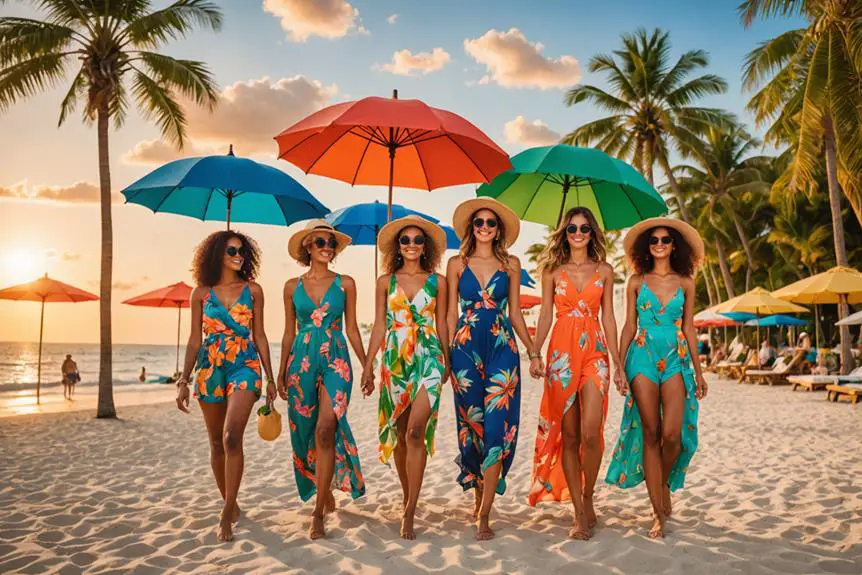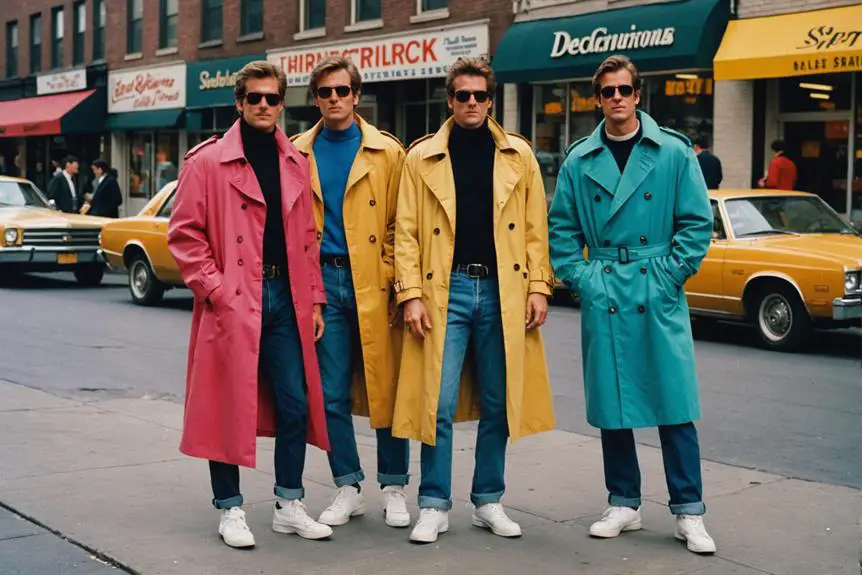Consider how Denise Lovett's transformation throughout "The Paradise" is mirrored in her wardrobe, reflecting her quest for independence. While the costumes impress with their intricate designs, they also spark debates about historical accuracy and the show's portrayal of class distinctions. You might find it intriguing to explore how these outfits not only define character dynamics but also influence viewer perceptions of the Victorian era. What does this say about the intersection of fashion and narrative in period dramas?
Overview of The Paradise
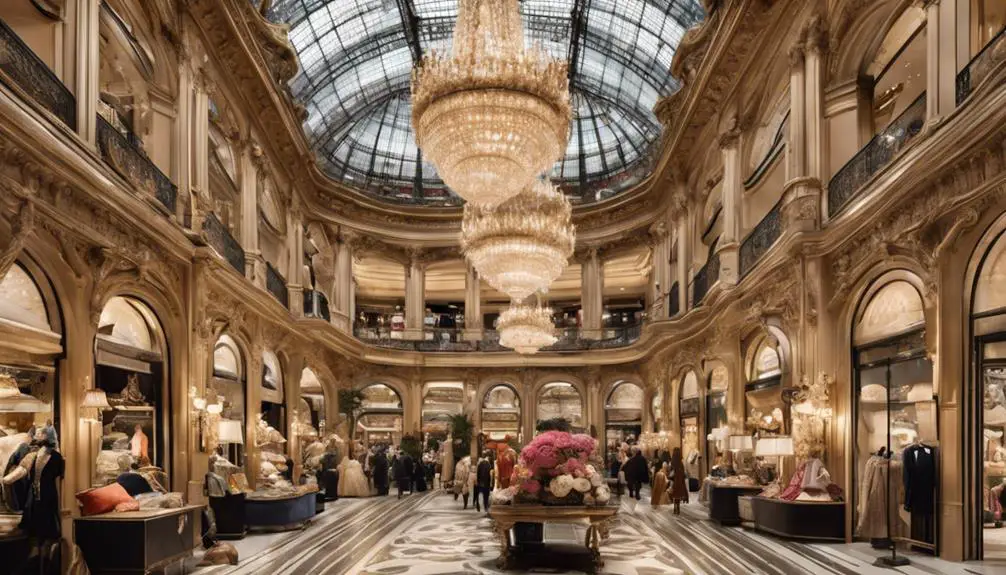
"The Paradise" is an enthralling British television series that immerses you in the opulence of a grand department store during the late 19th century. Set in the 1870s, this show reflects the rise of consumer culture in Victorian England, making it a fascinating watch for anyone interested in history or fashion. Based on Émile Zola's novel "Au Bonheur des Dames," the Paradise TV series showcases the life of Denise Lovett, an ambitious young woman who's on a quest for independence and employment.
As you follow Denise, you'll explore themes like ambition, romance, and social class dynamics. It's not just her journey; it's a peek into the lives of various characters maneuvering their way through the vibrant world of retail. With eight episodes, each around 60 minutes long, you'll find plenty of time to get wrapped up in the drama!
The production team did an amazing job with the visuals. The rich aesthetic and period-specific details pull you right into the heart of the department store. You can almost smell the perfume and feel the excitement of shopping! And let's not forget the colorful interiors that set the scene perfectly for the unfolding stories.
Costume Design Analysis
Costume design in "The Paradise" plays an essential role in establishing the show's rich narrative and visual landscape. You can really see how the outfits reflect the Victorian era's opulence and the social class distinctions of that time. Just look at Katherine Glendenning's wardrobe! Her elaborate outfits, crafted by a personal seamstress, scream wealth and status. Meanwhile, the shopgirls wear simpler, high-necked uniforms, which clearly show their lower social standing. It's fascinating how costumes convey character traits and emotional arcs, right?
Take Denise Lovett, for instance. Her evolving attire highlights her ambition and independence throughout the series. You can almost track her journey just by looking at what she wears. But, here's the kicker—some critics argue that the show mixes elements from different periods, leading to confusion about the time setting. A Victorian-era outfit shouldn't look like it stepped out of a time machine, right?
Plus, the excessive decorations, like ribbon rosettes and hanging crystals, can distract from the overall vibe. Sometimes, less is more! So, while the costume design analysis reveals a lot about character and setting, it also raises eyebrows about historical accuracy. What do you think? Do the costumes enhance your viewing experience, or do they leave you scratching your head? It's all part of the charm of "The Paradise," making us question and appreciate the artistry behind those stunning outfits!
Historical Accuracy in Costumes
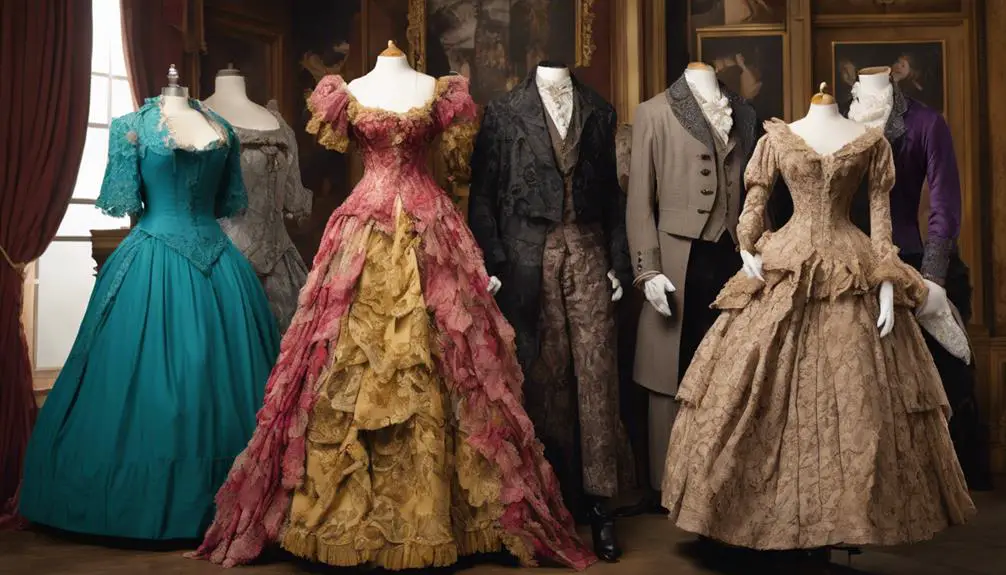
When you watch "The Paradise," you might notice that the costumes don't quite match up with the historical setting. I mean, how can a show set in the late 1870s have outfits that look like they're from a whole different decade? It's a bit frustrating, right? Let's chat about those costume design inconsistencies and how they miss the mark on period style!
Costume Design Inconsistencies
Critiquing the costumes in "The Paradise" reveals significant historical inaccuracies that can frustrate viewers. You might notice that the clothing styles jump around between 1868 and 1885, even though the story is set in the late 1870s. It's like they couldn't decide on a decade! The bodices lack that iconic period silhouette, and don't get me started on the modern embellishments like ribbon rosettes and hanging crystals—what were they thinking?
Plus, it's odd to see the main characters decked out in extravagant outfits while the shop girls wear more authentic uniforms, creating major costume design inconsistencies that clash with the show's class distinctions. And hairstyles? They definitely missed the mark there too. Characters sport cuts and styles that just don't fit the modesty norms of the 1860s and 1870s.
While the costume designer clearly aimed to show off character traits, it seems visual appeal took priority over historical accuracy. So, are you left scratching your head about the era depicted? You're not alone! Let's hope future seasons get it right.
Period Style Misalignment
Many viewers have noticed a troubling misalignment in period style throughout "The Paradise." The show struggles to maintain a consistent aesthetic that accurately reflects the late 1870s, with costumes oscillating between various years, which not only confuses the audience but also undermines the show's historical integrity. Take Miss Audrey, for example. Her outfits often appear too flashy, with ribbon rosettes and hanging crystals that scream modernity rather than the modesty of Victorian fashion.
You'd think that the shop girls and customers would wear outfits fitting the era, but instead, the differences are glaring. It's hard to ignore that the main characters' costumes don't align with the early bustle fashion everyone expected. Even hairstyles seem off, lacking that neat and tidy Victorian vibe.
The production faced real challenges in sourcing authentic materials due to budget constraints, which definitely impacted the overall quality of the costumes. So, when you watch "The Paradise," you might find yourself questioning, "Is that really how they dressed back then?" It's a bummer, especially for historical enthusiasts who crave that authentic experience.
Character Wardrobe Highlights
Let's talk about the standout outfits in "Paradise"! Denise's ambitious attire shows her growth from a shop girl to a stylish figure, while Katherine's opulent styles scream luxury and sophistication. And don't forget the shopgirls' uniforms—simple yet telling, they highlight the class differences of the time, making you wonder how fashion really reflects society, right?
Denise's Ambitious Attire
Often seen as a reflection of her ambition, Denise Lovett's wardrobe in *The Paradise* artfully blends practicality with style, showcasing her determination to rise in the competitive retail world. You can't help but admire her high-neckline day dresses that perfectly balance elegance and functionality. They're not just pretty; they symbolize her journey from a shop girl to a key player in the department store.
Denise's outfits often feature fitted jackets made from luxurious brocade, which add a touch of sophistication. The color palette? It shifts from soft, light tones, representing her innocence and hope, to darker shades as she faces challenges. It's like her wardrobe tells her story, don't you think?
And let's not forget the accessories! Modest hats and gloves add a dash of Victorian charm, reminding us of her social status and the fashion norms of the time. With attention to detail, each fabric texture and embellishment enhances her character's development, making her outfits a vital part of the show's visual narrative. So, next time you watch, pay close attention to Denise's wardrobe—it's more than just clothes; it's a symbol of her ambition!
Katherine's Opulent Styles
Katherine Glendenning's wardrobe is a stunning display of opulence that perfectly captures her upper-class status in Victorian society. You can't help but admire her opulent dresses made from luxurious fabrics, each one more breathtaking than the last. The intricate detailing, featuring delicate lace and stunning embroidery, showcases not just her wealth but also the incredible skills of her personal seamstress.
As you observe her outfits, notice how the color palette shifts from lighter shades that symbolize innocence to darker tones hinting at her manipulative nature as the story unfolds. It's like her clothing tells a story all on its own!
Don't forget the accessories! Katherine knows how to make a statement with her jewelry and elegant hats, which only enhance her aristocratic image. These choices sharply contrast with the simpler, more practical attire of the shopgirls, really highlighting those class distinctions.
Isn't it fascinating how fashion can reflect personality? Katherine's wardrobe isn't just about looking good; it's about power, status, and, let's be honest, a little bit of drama. So, what's your favorite piece from her collection?
Shopgirls' Uniform Variations
The shopgirls in "The Paradise" sport high-necked dresses that embody their modesty and social standing within the department store. These outfits really highlight the differences between the working-class shopgirls and their affluent customers. Can you believe how much their uniforms reflect their lives? Here are three standout features of the shopgirls' uniform variations:
- Brocade Jackets: These jackets add a touch of elegance while keeping things modest.
- Fitted Bodices: The bodices hug their figures, showcasing the fashionable silhouette of the 1870s.
- Muted Tones: The color palette sticks to subtle hues, underlining their working-class status compared to the vibrant dresses worn by the wealthy.
While the uniforms follow a basic design, you can spot unique embellishments or fabric patterns that let each shopgirl express a bit of individuality. Isn't it interesting how fashion can reveal so much about social class? These variations are more than just clothing; they're a window into the characters' struggles and aspirations. So, next time you watch "The Paradise," pay attention to those outfits and what they say about the characters!
Viewer Reactions to Costumes
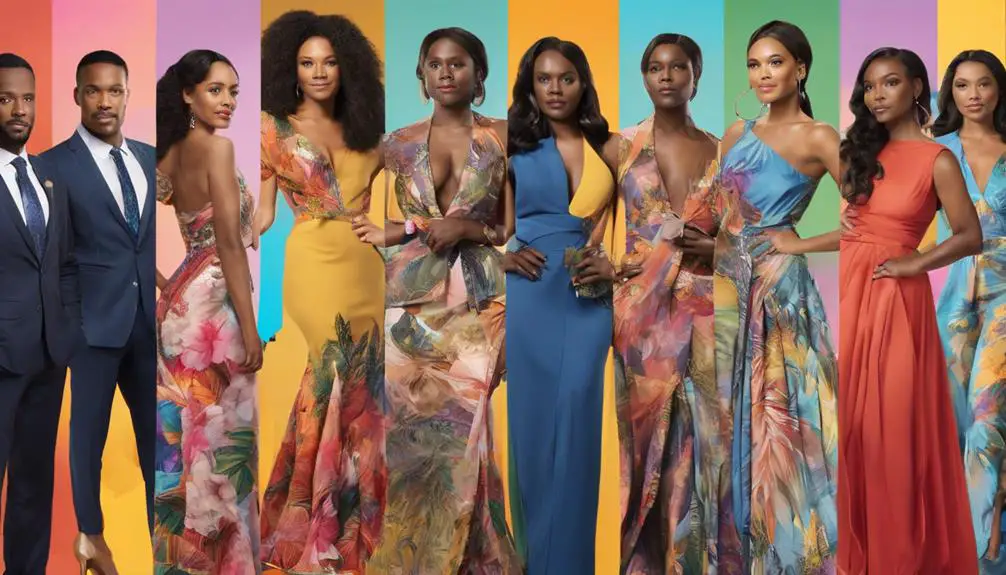
Viewer reactions to the costumes in "The Paradise" have sparked a lively debate, with numerous fans expressing mixed feelings about the design choices. Some folks absolutely love the visual appeal of the costumes, admiring the colors and style. But, not everyone shares that enthusiasm! Many viewers feel that the excessive embellishments, like those ribbon rosettes and hanging crystals, really take away from the authenticity of the costumes. Can you imagine being so distracted by the outfits that you decide to stop watching? It's happened!
Critics have pointed out that the show missed the mark when it comes to accurately representing late 1870s fashion. They wanted to see more realistic portrayals of class distinctions through attire, which is super important in a historical context. Instead, viewers questioned the color choices for Katherine Glendenning's costumes, feeling they didn't quite fit the period. It's like dressing up for a party but showing up in a totally different decade!
Legacy of The Paradise Fashion
Many fans of "The Paradise" appreciate how the show's fashion captures the essence of Victorian style, showcasing opulence and social distinction through its character-specific wardrobes. Let's explore why the costumes made such an impact:
- Authenticity: The costumes are meticulously designed, using fabrics like brocade and intricate embellishments that bring the late 19th century to life.
- Character Development: Each wardrobe tells a story, reflecting the social status and growth of the characters as the plot unfolds.
- Cultural Influence: The show sparked renewed interest in Victorian fashion, leading to modern interpretations that keep the style alive today.
The legacy of "The Paradise" goes beyond just pretty dresses and sharp suits. It's about how these costumes set a gold standard in period drama. You can see how future adaptations now prioritize historical accuracy and character representation in their fashion choices. Isn't it fascinating how a show can influence what we wear and how we view history?
Frequently Asked Questions
Why Was the Paradise Cancelled?
The Paradise was cancelled due to declining viewership and high production costs. Despite its cultural impact, the show struggled to engage audiences consistently, leading to its unfortunate end despite a dedicated fanbase and praised character depth.
Where Was the Paradise Filmed?
"The Paradise" was filmed in several stunning locations across Yorkshire. You'll find the historic Old Wool Exchange, along with charming towns like Saltaire and Hebden Bridge, all contributing to the show's authentic Victorian atmosphere.
Where Can I Watch the Paradise Season 1?
You can watch "The Paradise" Season 1 through various streaming options. Check TPT's official website for online viewing, or explore popular platforms. Don't forget to confirm availability in your region for the best experience!
What TV Channel Is Paradise On?
You'll find "The Paradise" airing on BBC One, where its enchanting storytelling and fashion influence have drawn viewers in. It's a great channel for discovering period dramas that showcase rich historical narratives and stunning costumes.
